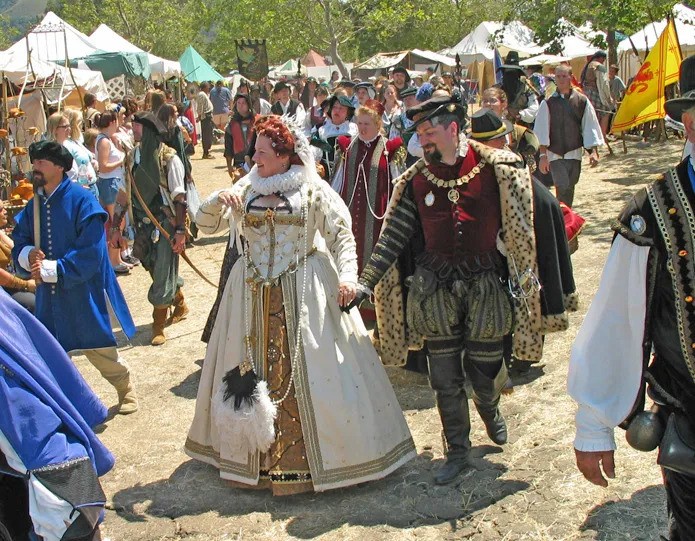Introduction:
Embarking on the journey of creating your own Renaissance costume is a thrilling endeavor, and one of the most crucial elements in bringing your vision to life is selecting the right fabrics. The Renaissance era, spanning from the 14th to the 17th century, was a period of artistic and cultural rebirth, influencing fashion significantly. To ensure the authenticity and comfort of your costume, it's essential to carefully choose fabrics that align with the historical context while considering practical aspects like movement and climate.
Authenticity Matters:
The first step in choosing fabrics for your renaissance outfits is to prioritize authenticity. Historical accuracy is key to capturing the spirit of the era. For garments like gowns and doublets, opt for natural fibers such as linen, wool, and silk. Linen, a versatile and breathable fabric, was widely used for everyday clothing, while silk was reserved for the nobility due to its luxurious and costly nature. Wool, warm and durable, was common for outerwear. Consider the social status of your character and select fabrics accordingly to reflect their place in society.
Understanding the Layers:
Renaissance costumes often comprised multiple layers, each serving a specific purpose. Begin with a linen chemise or shirt as the base layer, providing comfort and absorbing perspiration. Over this, add the outer layers like bodices, doublets, and gowns made from slightly heavier fabrics such as wool or silk. Pay attention to the weight and drape of the fabric, ensuring that each layer complements the others while allowing freedom of movement. Incorporating these layers not only enhances the authenticity of your costume but also adds depth and richness to the overall appearance.
Embracing Ornate Fabrics for Nobility:
If your Renaissance costume represents a character of noble or aristocratic status, consider incorporating ornate fabrics to signify wealth and prestige. Brocades, velvets, and damasks were popular choices among the nobility. These fabrics often featured intricate patterns and rich colors, reflecting the opulence of the upper class during the Renaissance. Incorporating such luxurious materials in your gown or doublet will instantly elevate the status of your character, making a bold statement at any Renaissance fair or costume event.
Paying Attention to Color Palette:
Understanding the color palette of the Renaissance period is crucial for an authentic costume. While natural dyes limited the range of colors available, rich jewel tones such as deep reds, blues, and greens were prevalent among the upper class. Earthy tones like browns, greens, and ochres were popular for everyday wear. Paying attention to the appropriate color scheme for your character's social standing and role in society will enhance the overall historical accuracy of your costume.
Considering Practicality and Comfort:
While historical accuracy is paramount, practicality and comfort should not be overlooked. Renaissance fairs and events may involve long hours of wear, so selecting fabrics that allow for ease of movement and breathability is essential. Lightweight linens are excellent choices for chemises and underskirts, ensuring comfort even in warmer climates. Additionally, consider the weight of outer garments – heavy velvets and brocades may be visually stunning but can become cumbersome if worn for extended periods.
Embellishments and Trims:
The Renaissance period was known for elaborate embellishments and intricate trims adorning garments. Consider adding lace, embroidery, or metallic trims to your costume to capture the essence of the era. These details not only enhance the visual appeal of your attire but also showcase the craftsmanship and attention to detail that was characteristic of Renaissance fashion. Experiment with various embellishments to customize your costume and make it uniquely yours.
Conclusion:
In conclusion, choosing the right fabrics for your Renaissance costume involves a careful balance of historical accuracy, practicality, and personal style. By selecting authentic materials, understanding the significance of layers, embracing ornate fabrics for nobility, paying attention to the color palette, considering practicality and comfort, and adding embellishments and trims, you can create a costume that transports you back in time. Whether you're participating in a Renaissance fair or simply indulging in historical dress-up, the right fabrics will ensure your costume stands out as a true reflection of the captivating Renaissance era.


No comments yet